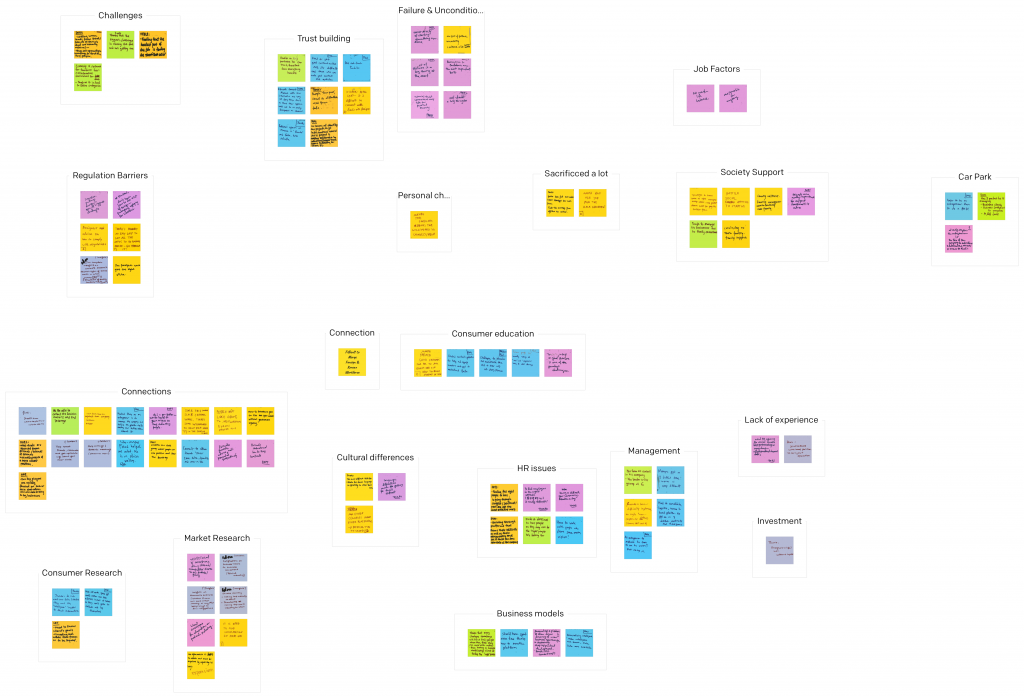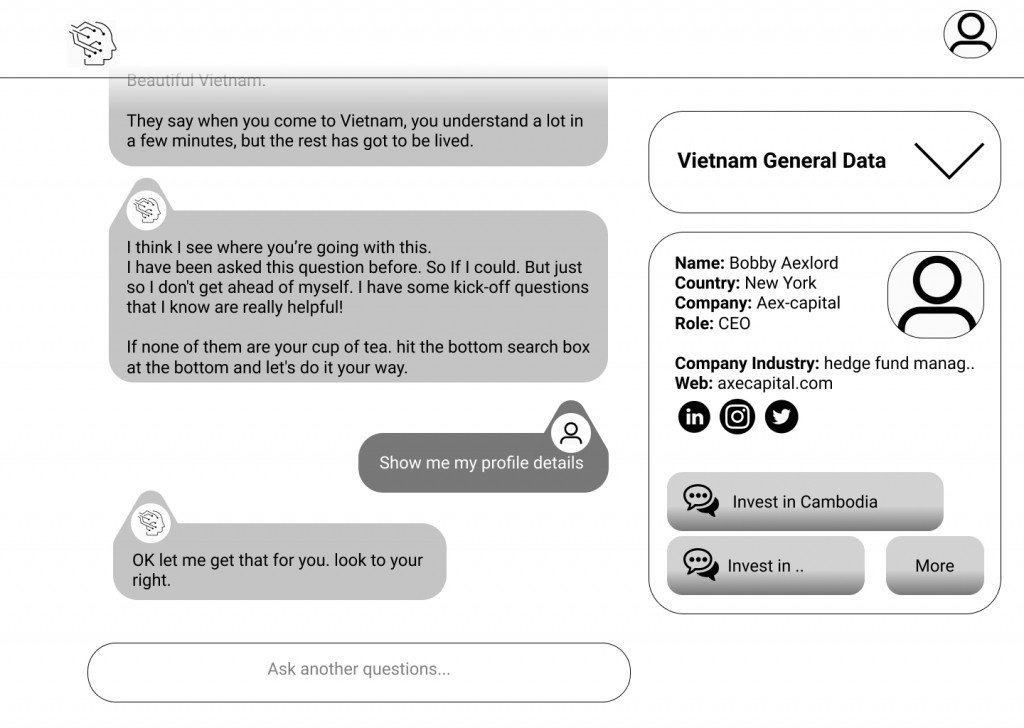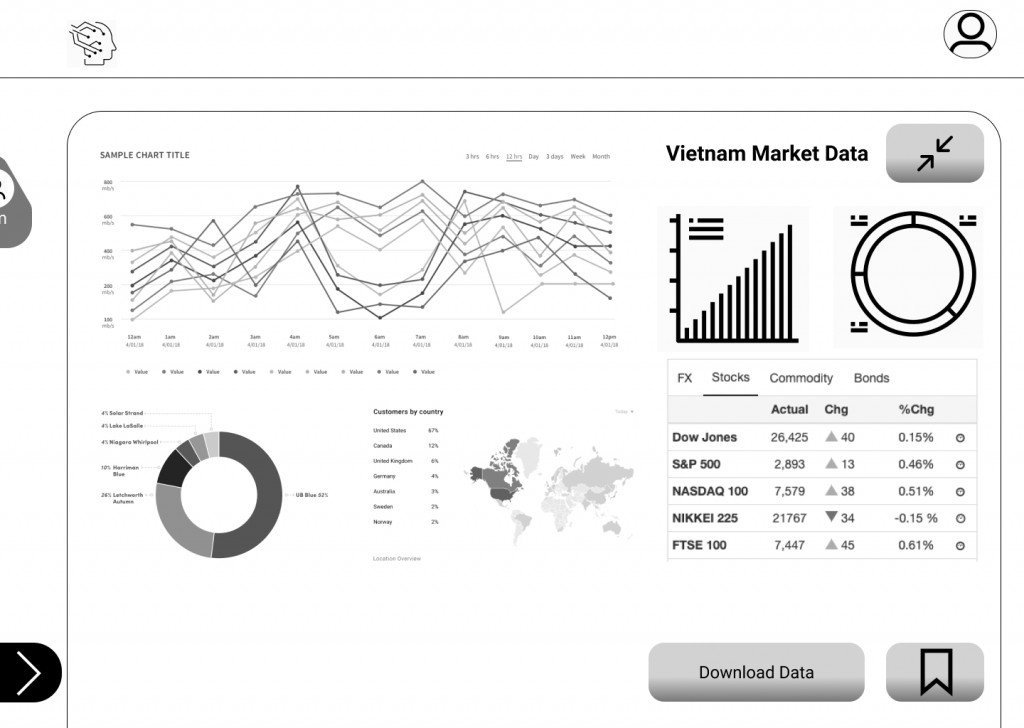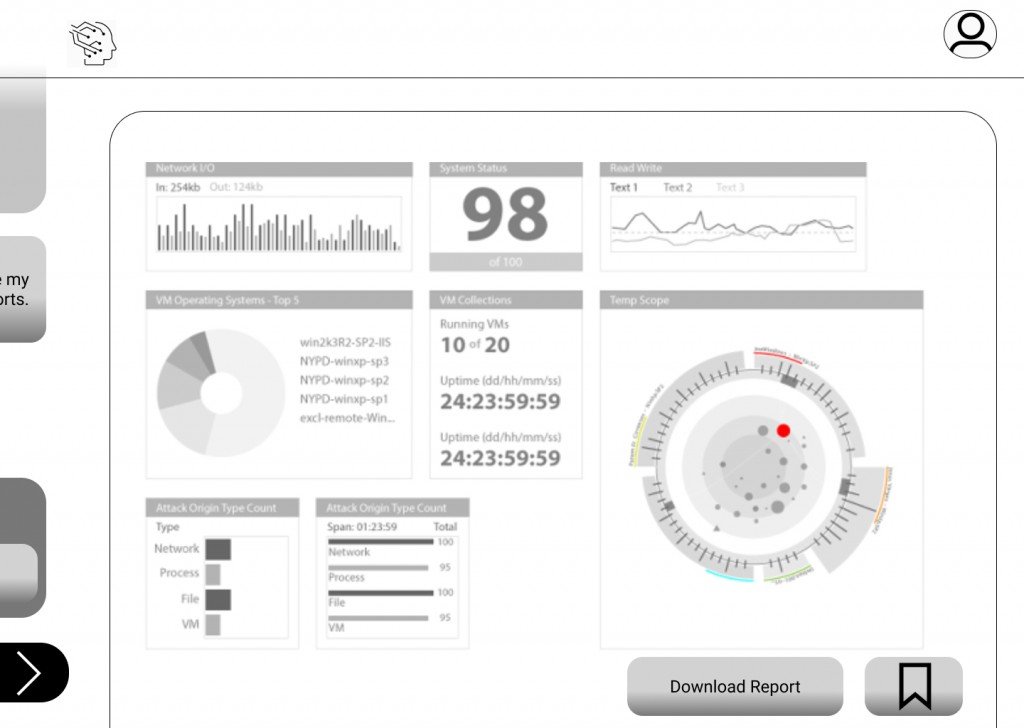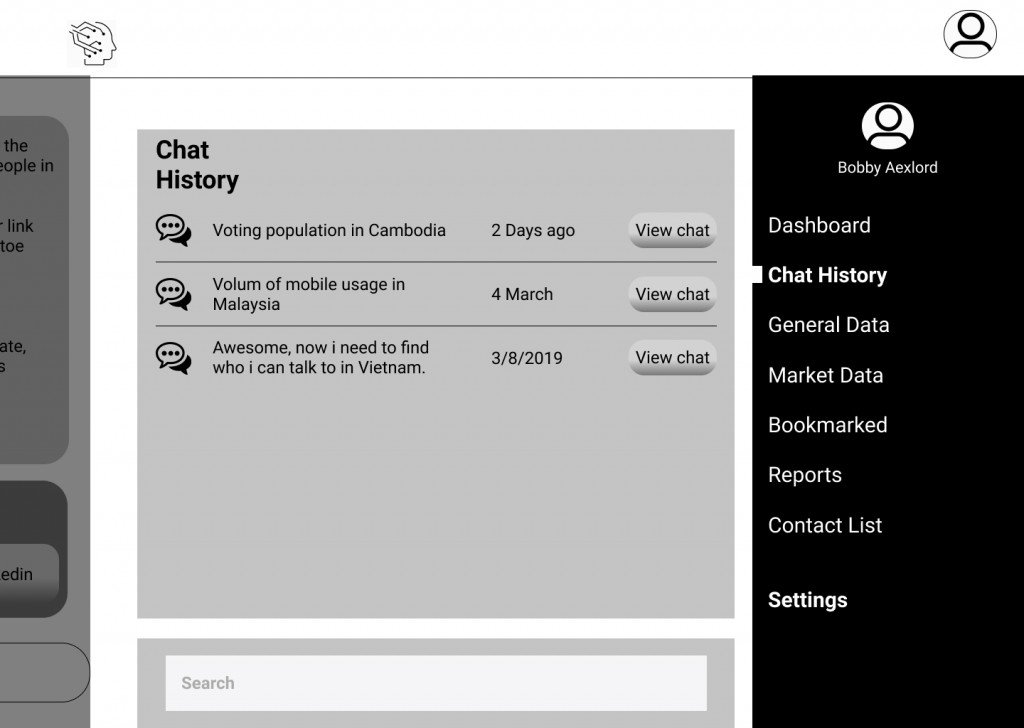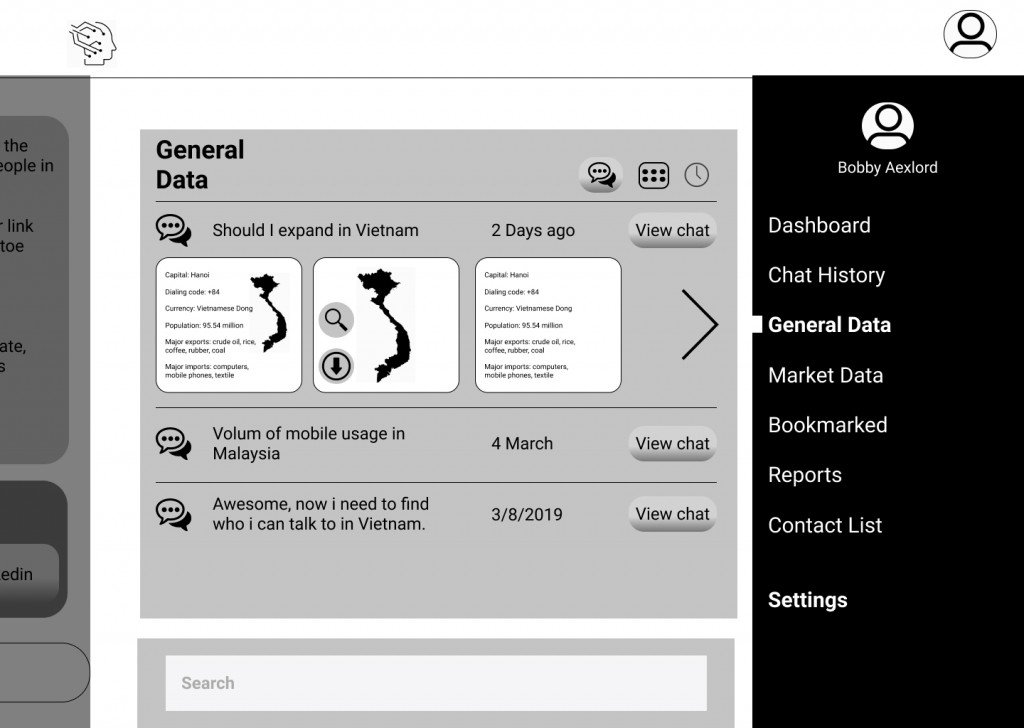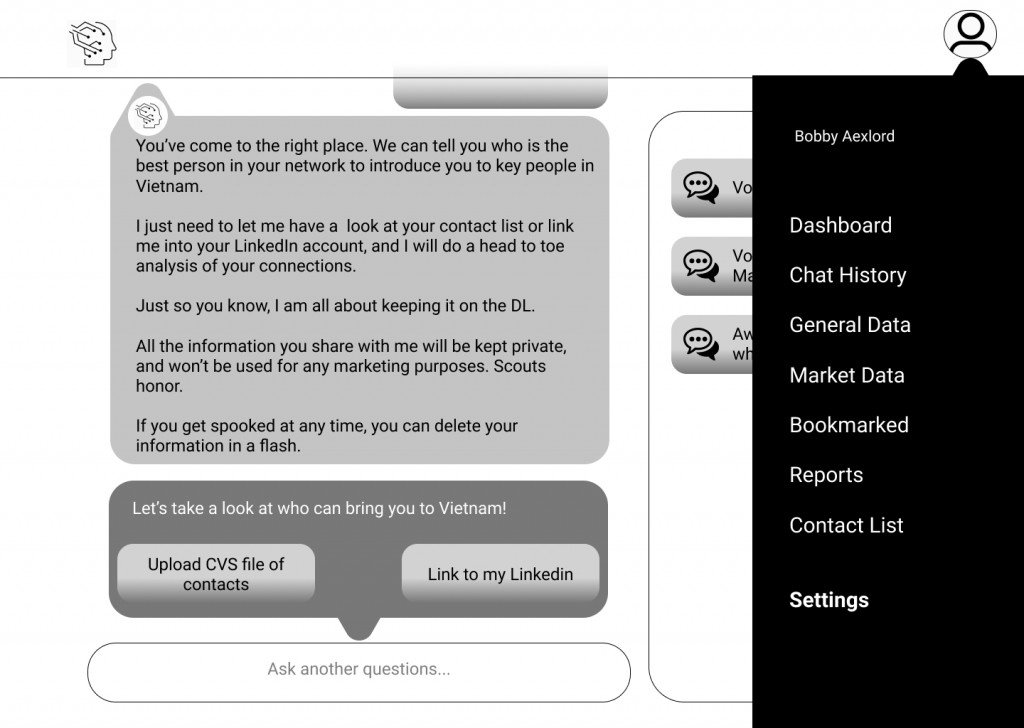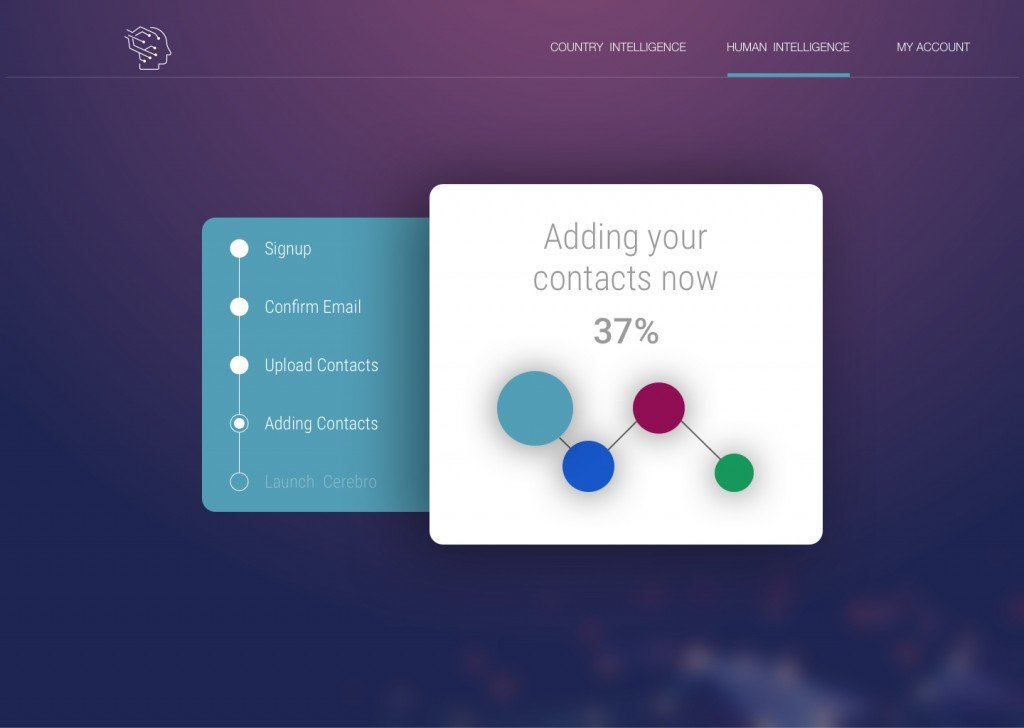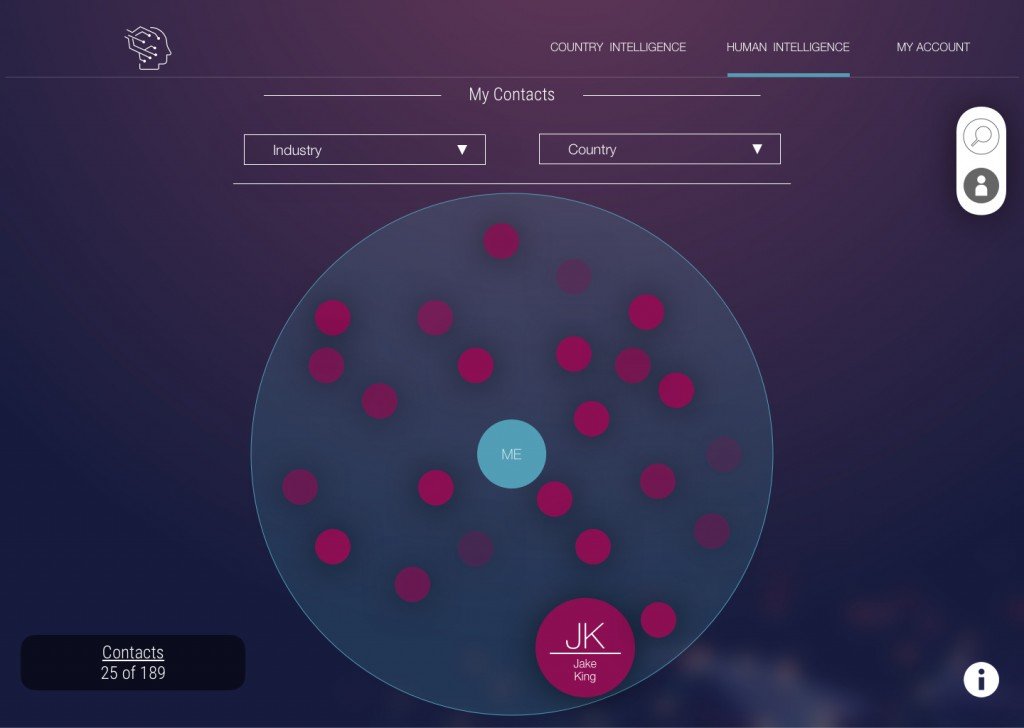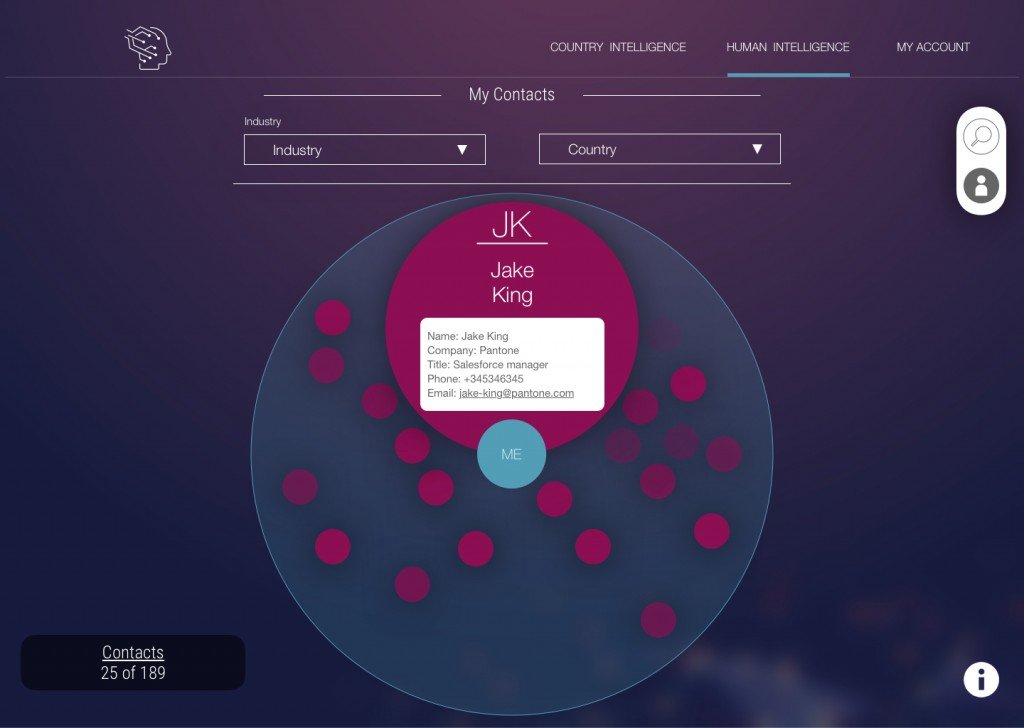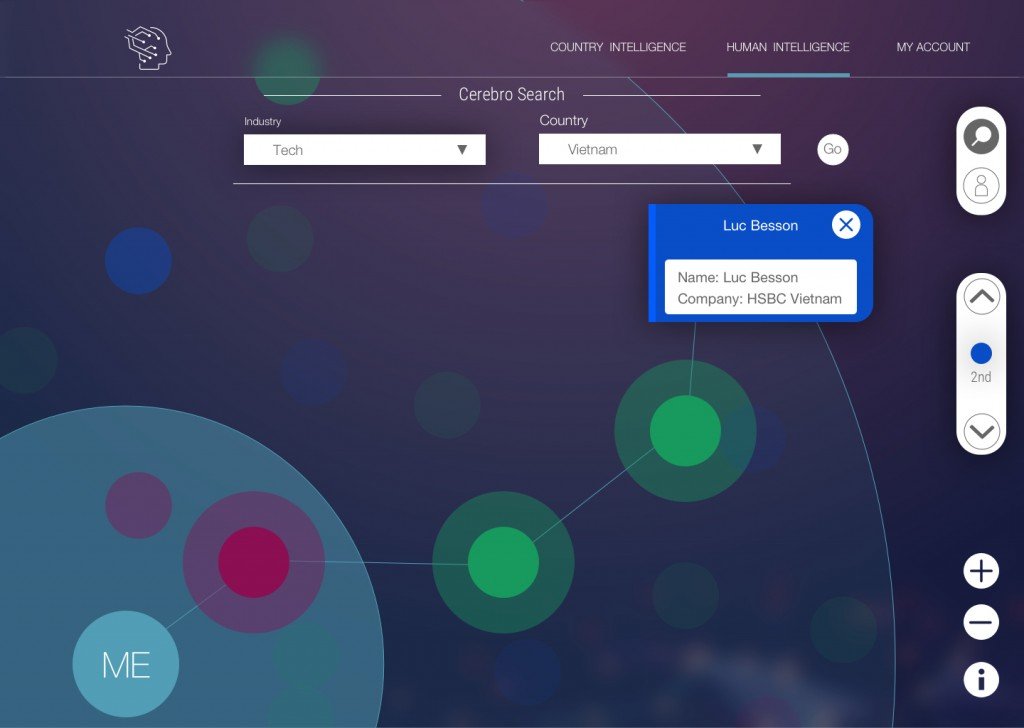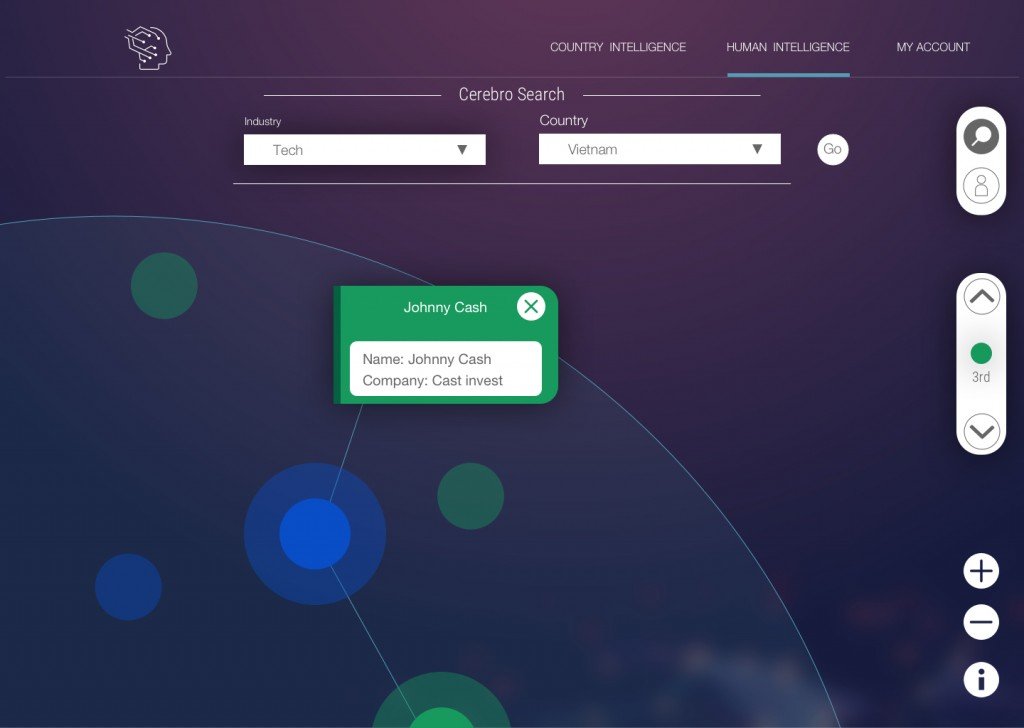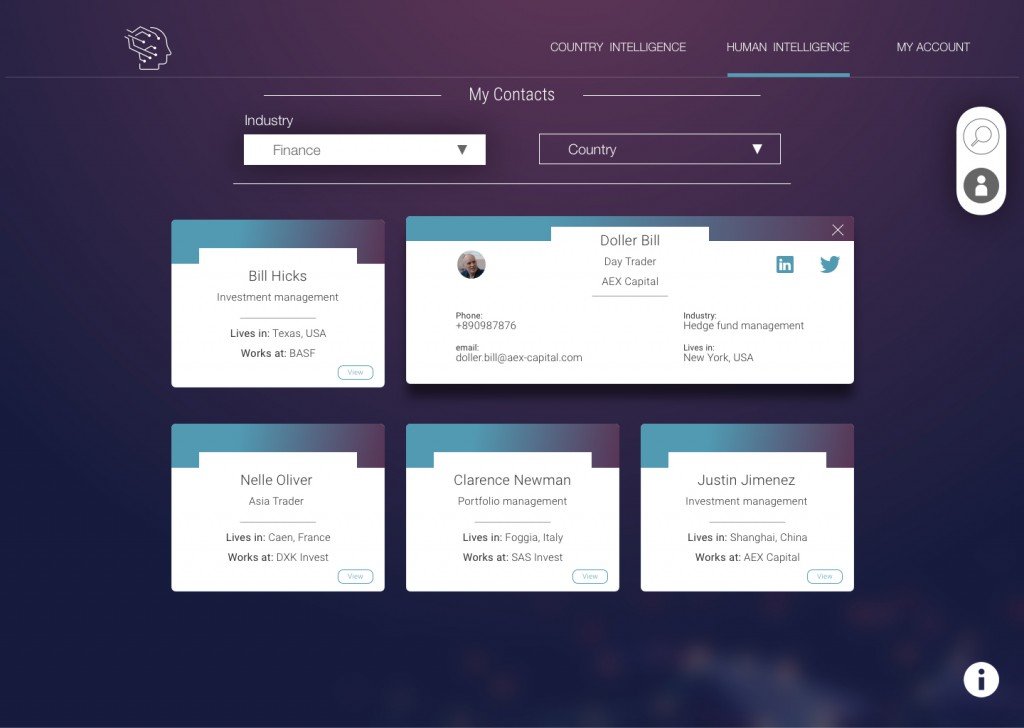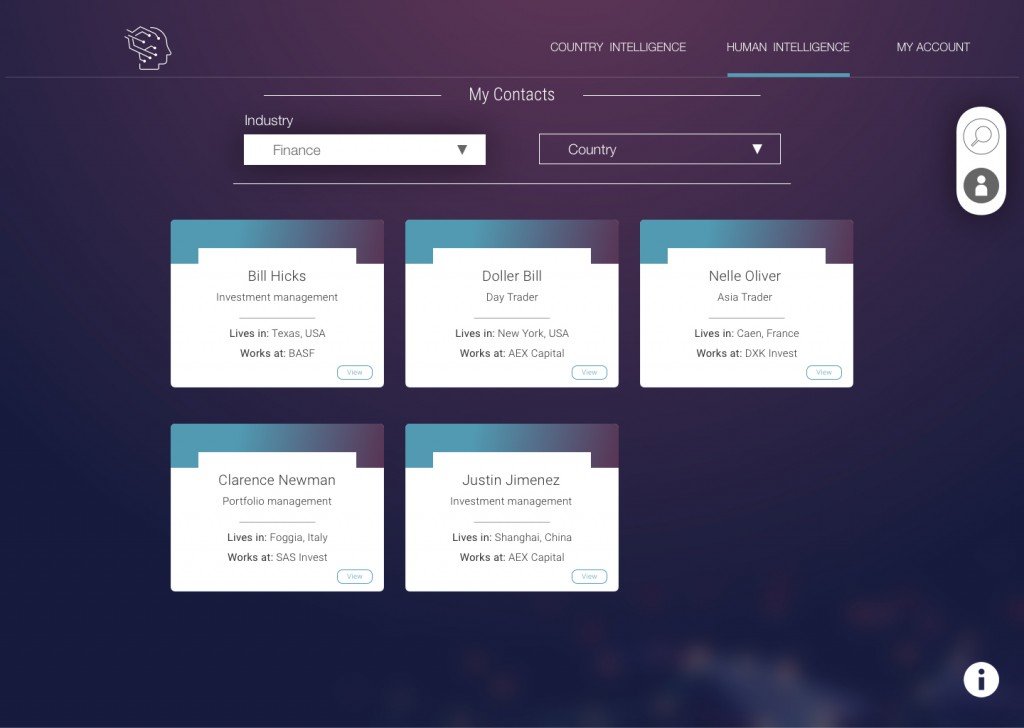Cerebro MVP: Human intelligence
Gorden gecko said it best. “the most important commodity I know of is, information”.
In this digital age, perception and connections are a reality. And in an Asian aspect, all business is conducted with connections and contacts. Helping users to see and plot relationships between People and Companies is how businesses trust, learn & grow.
This was the value proposition of Cerebro, to be able to recommend and map out the value of a users connections and companies that are in the uses contact circle.

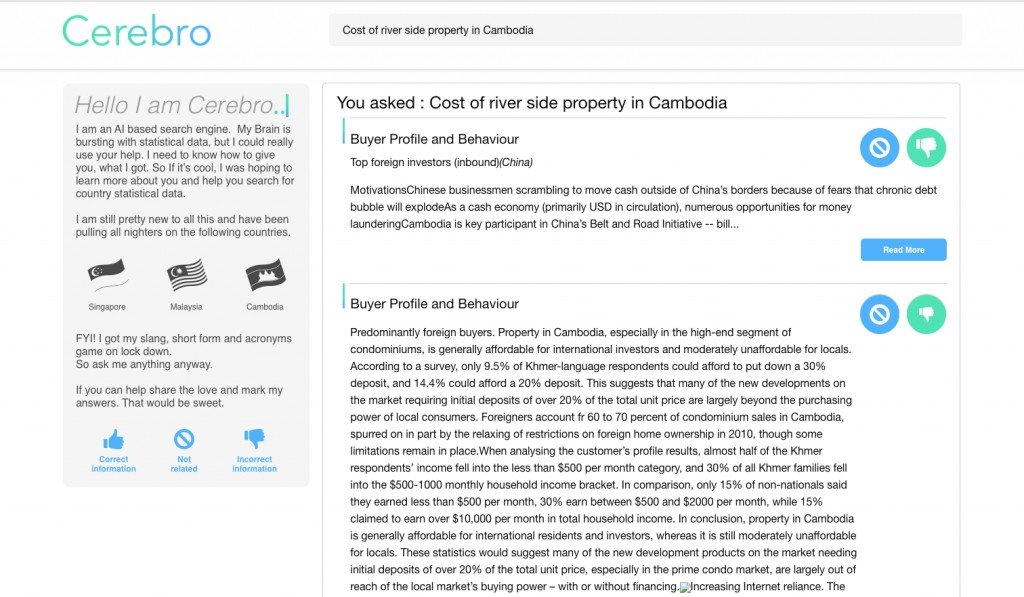
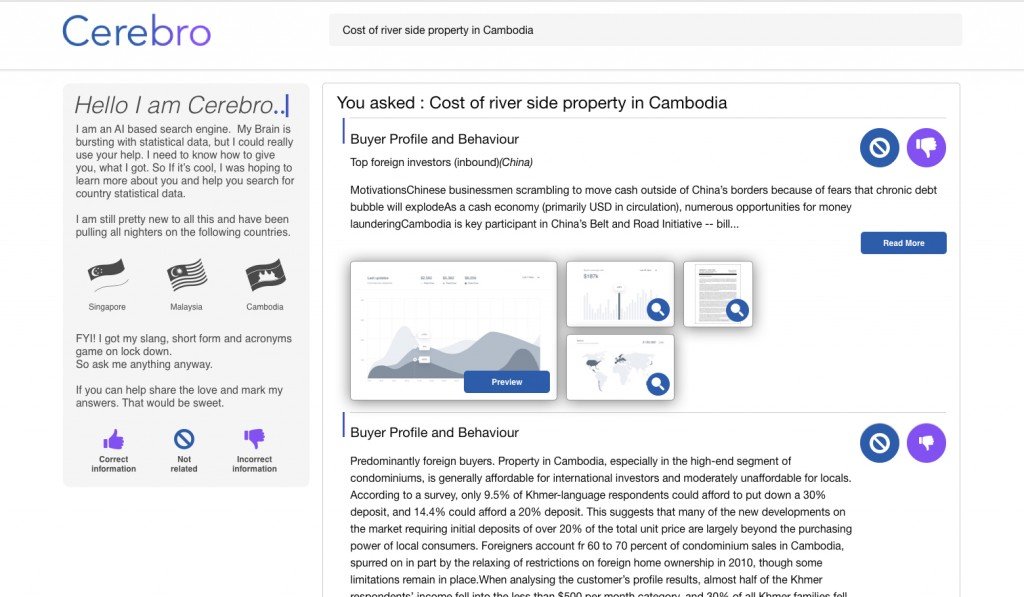
The mission of Cerebro is to be able to allow users to sign in, contribute their contacts and see how their contacts are related to each other, plus additional network value from the other users in Cerebro.
Developing a product with so many needs for users required the team to have an alignment and empathy for the user, with this being the case the first need was to create user personas. Understanding your users is the core principle in user-centered design. User personas are fictitious yet realistic representations of your target users. I created 4 personas with different pain points and needs They acted as a multipurpose tool used to drive many important product development tasks. formatting of the personas is meaningful and creates user empathy among the development team.




The outcome of the personas gave us a greater understanding of the problems facing our users.
An individual who has a closed network is someone whose contacts all know each other. Most of us tend to exist in closed networks, as it is simpler to maintain them.
With this as an understanding, we needed to have a more Anthropological approach to the design. We then looked at the Dunbar number.
Robert Dunbar’s number (50) is a suggested cognitive limit to the number of people with whom one can maintain a stable social relationships. This concept was taken into account when sketching out an idea of the interface.
With Dunbar’s number as the linchpin, we needed to address the actions the user perceives to be possible and then sketch out what is possible



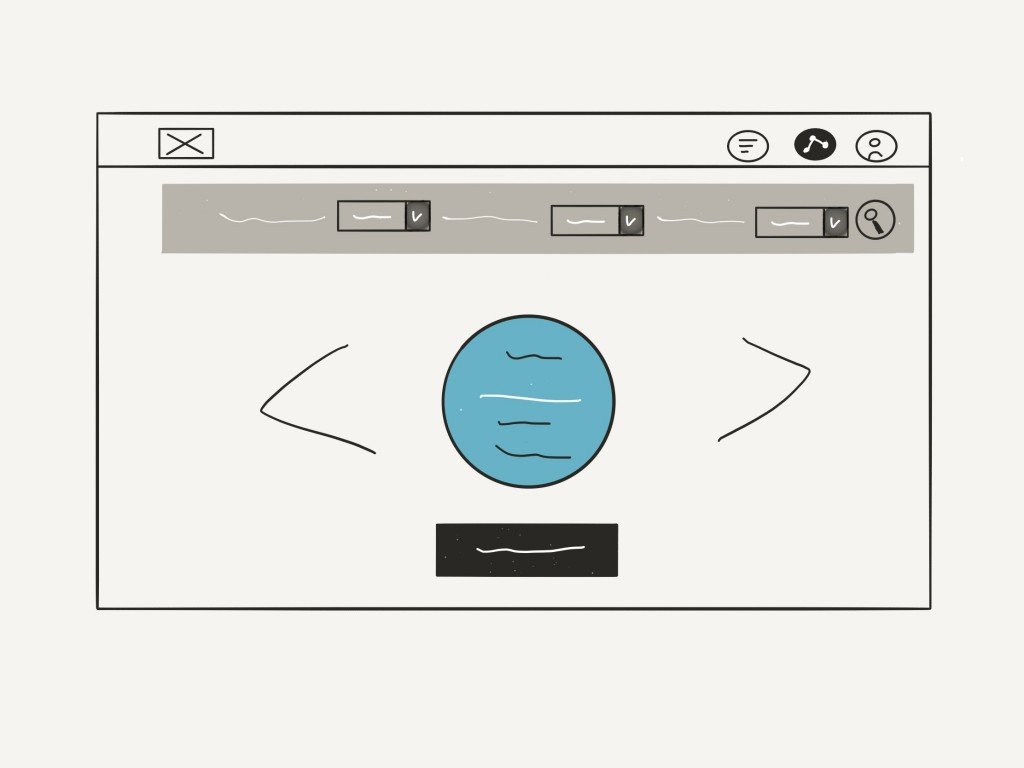

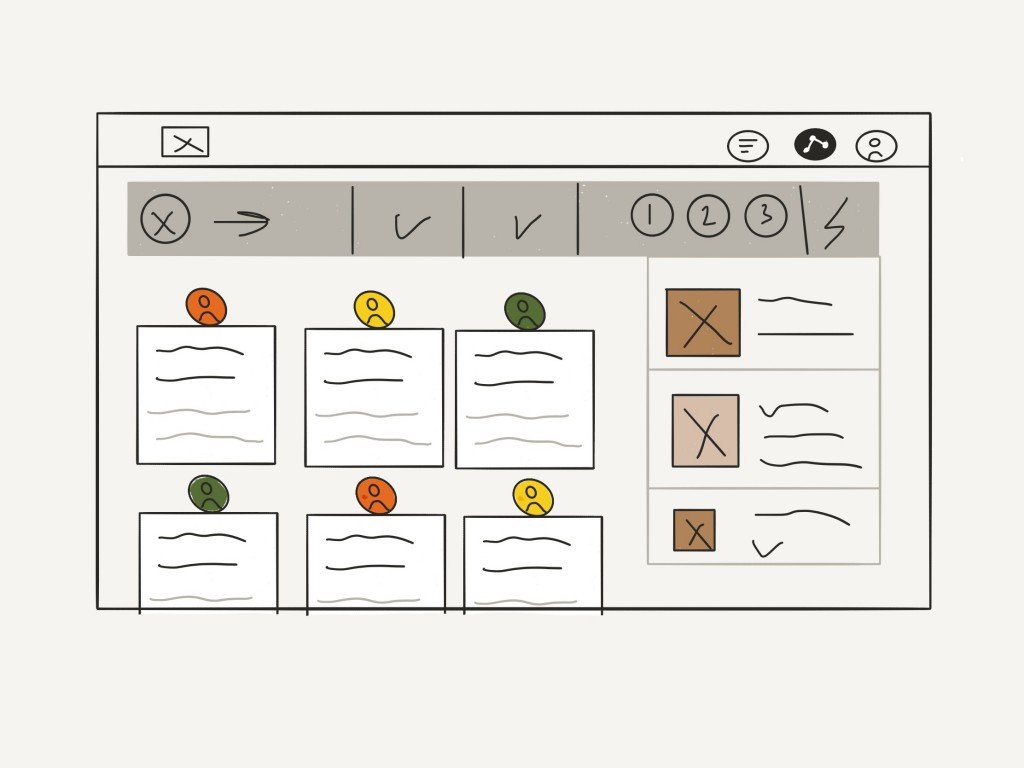


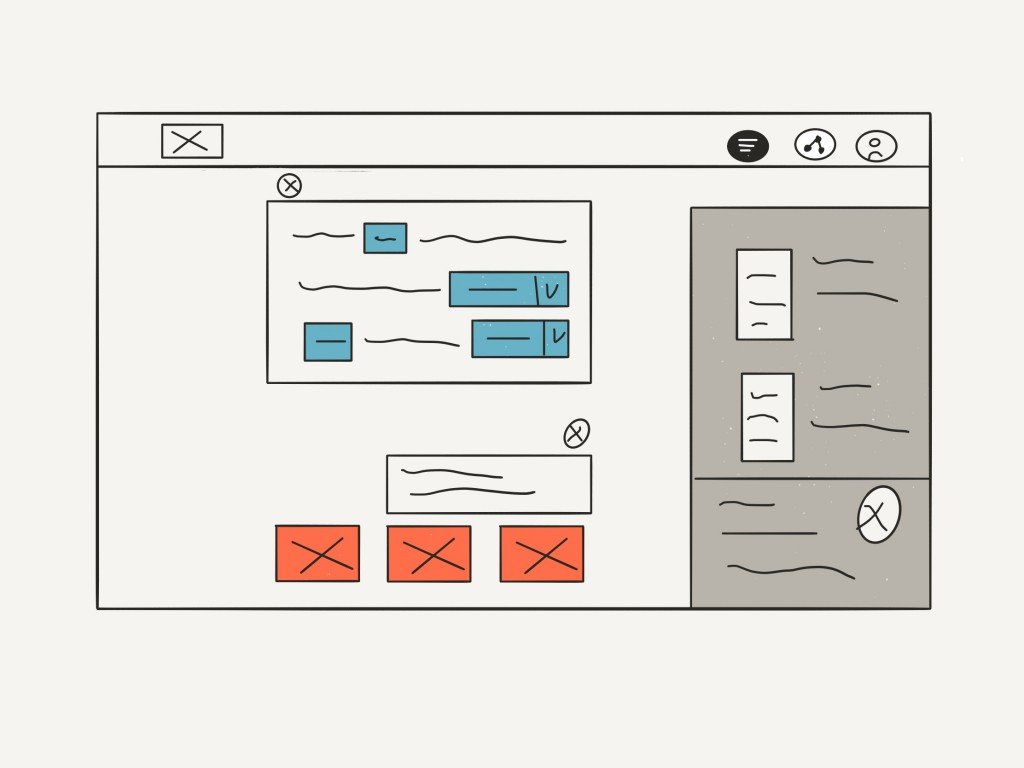
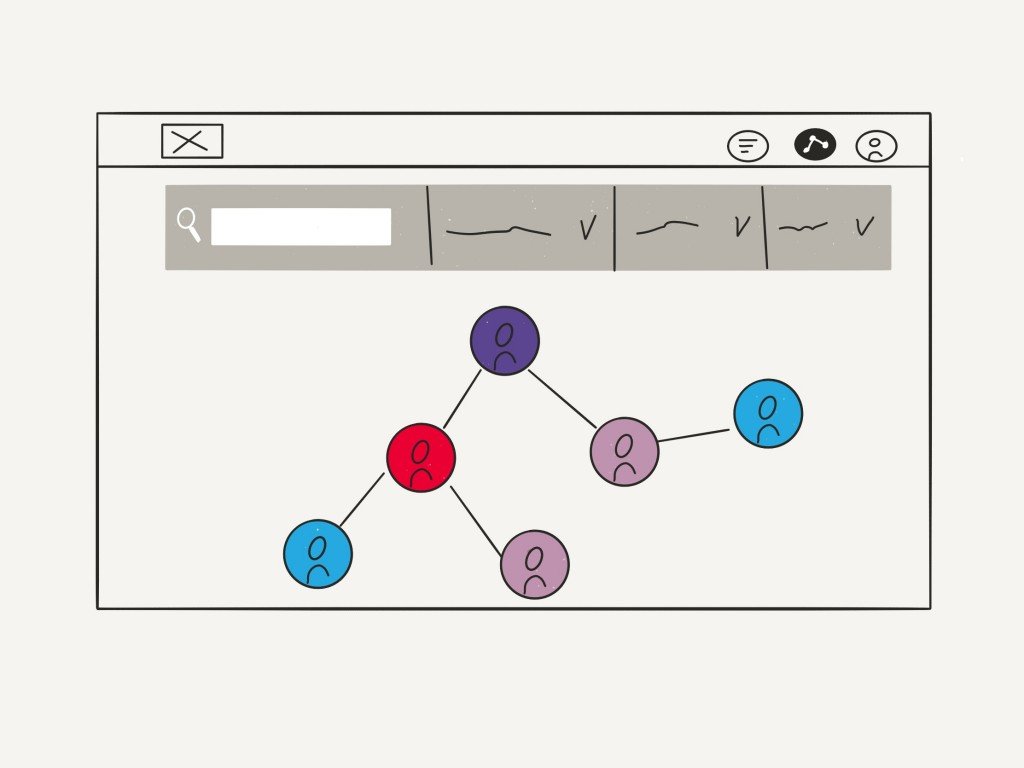

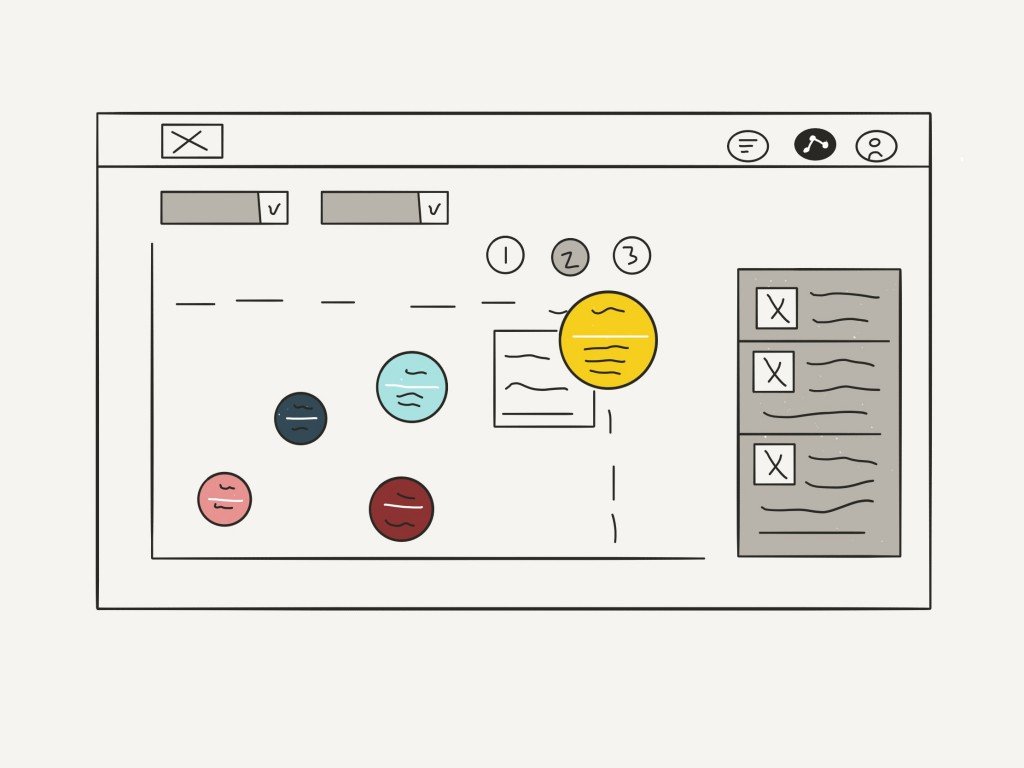
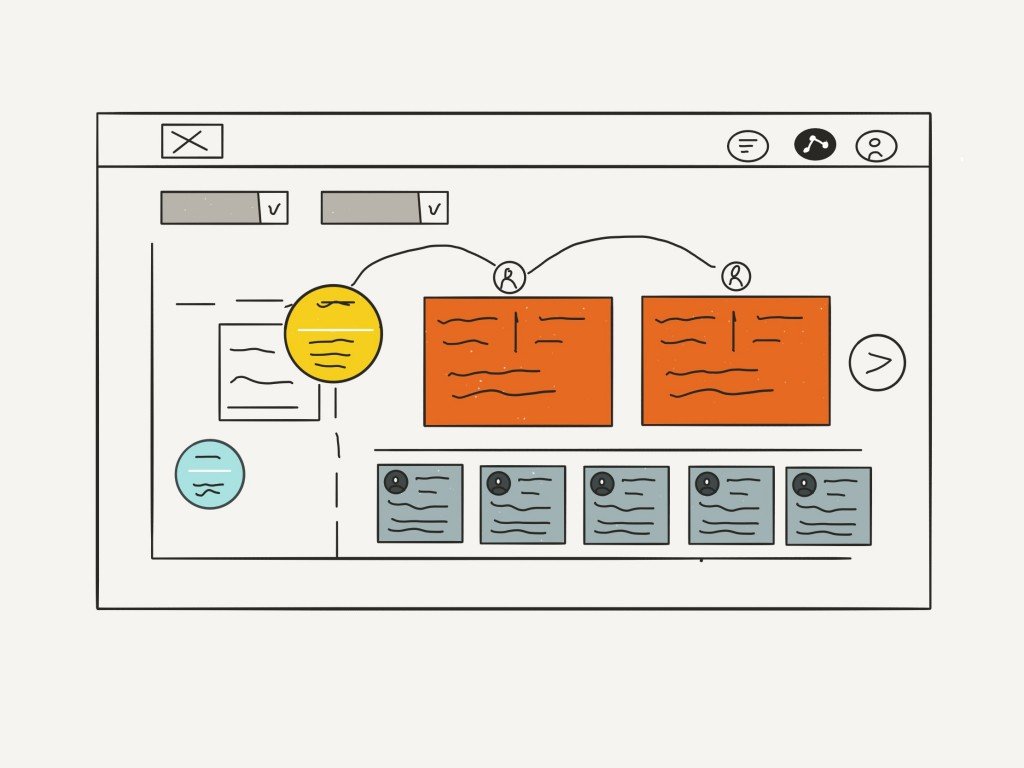
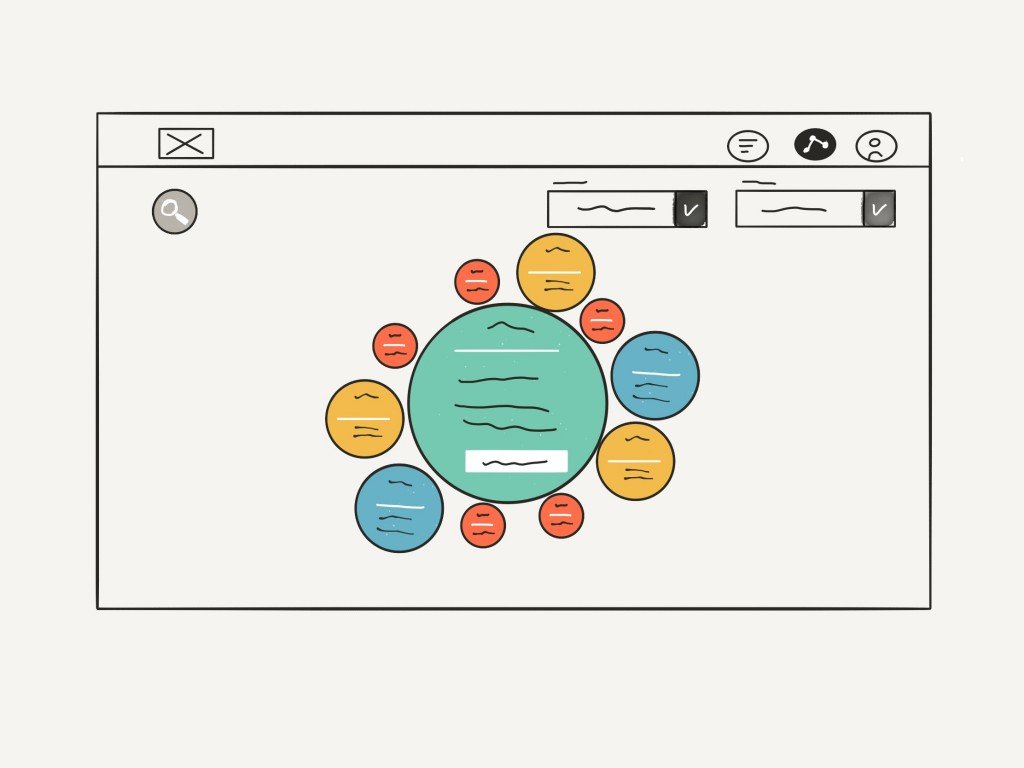


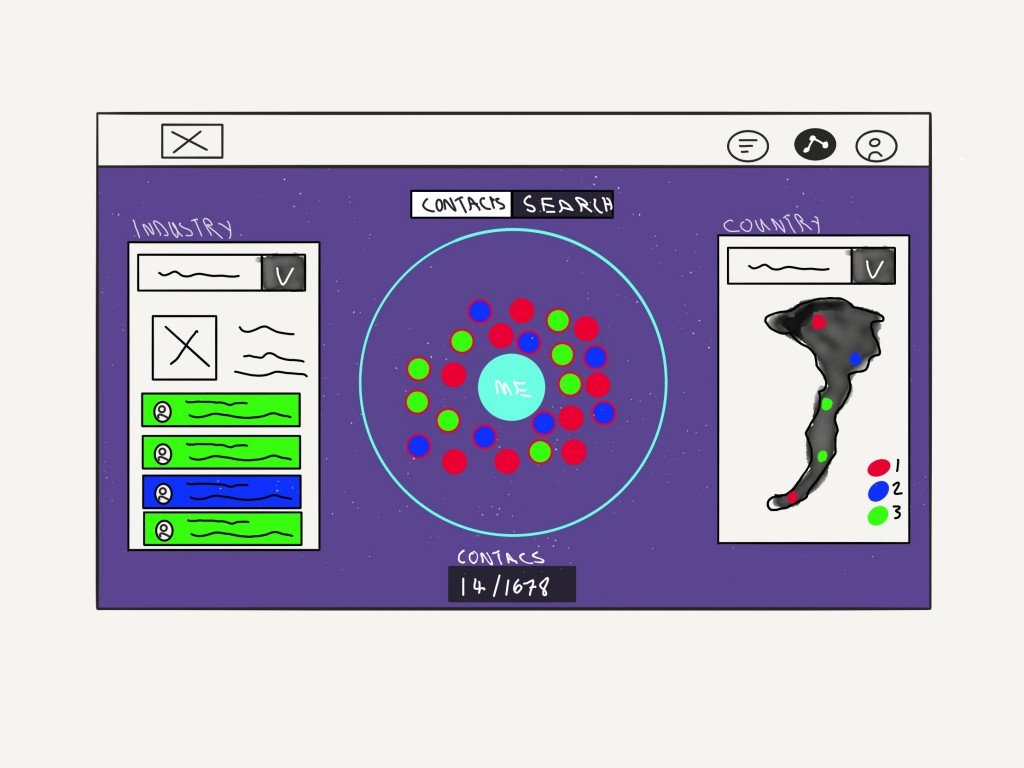


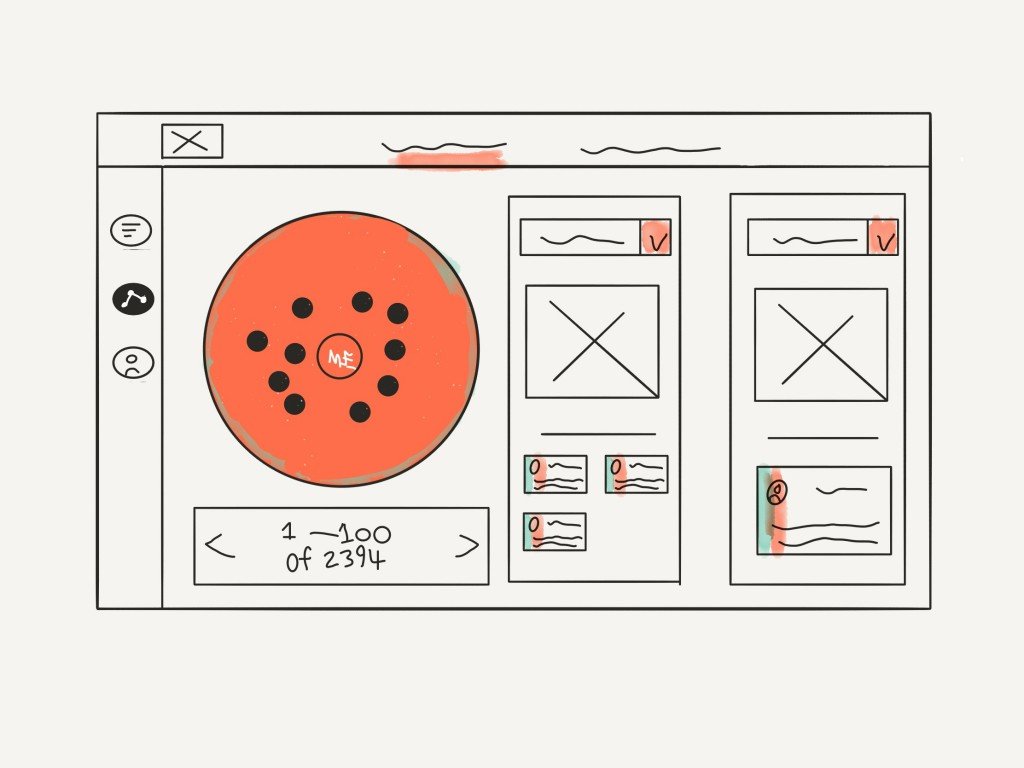
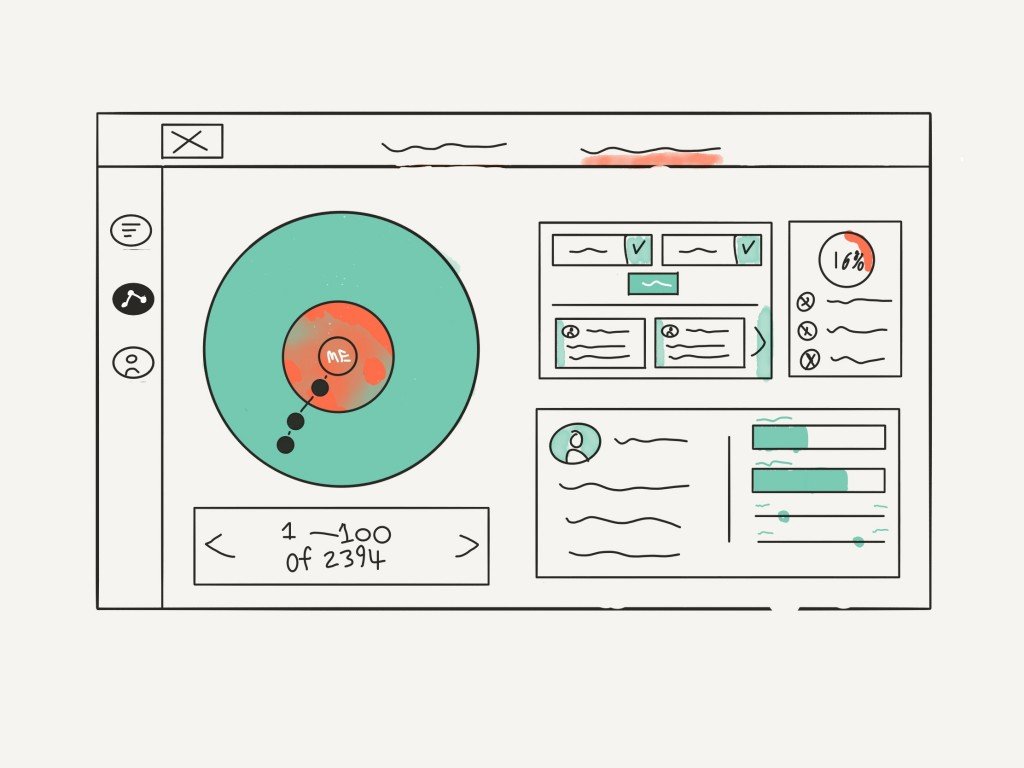
While the sketch’s achieved a team understanding, they asked more questions on the ideas, opinions, issues users would face.
How they interpret the information. It was clear that an Affinity Diagram session was needed to better help organizes the language data into groupings based on their natural relationships.
By implementing the Affinity Diagram session to generate, organize, and consolidate information related to the product, we could see the information process and how to handle complex taxonomy issues and future proof problems.
The coherent findings of the Affinity Diagram session were that obtaining the information must have a flow-state. Information will not be pushed to the user unless they intentionally ask for it. Like that of a conversation, content and directions would be based on user intent. If the mode of conversion was to be converted then a conversation chatbot was to be tested.
When creating this type of chatbot users are looking to get some sort of value from the chatbot, the aim was to provide it as simply and quickly as possible. Tone and flow were paramount, users aren’t exactly thrilled to have these types of conversations they find them to be impatient and have a low tolerance for inappropriate humor. For a truly commutative experience, we had to develop a more precise level of feedback, creating short feedback events.
Early staged structured tests granted profound quantitive data. First off the wireframes gave the user cognitive load in how the user would filter the information. As users seek correlation in the data they can suffer from Cognitive dissidence, as the current flow existed Decision fatigue would set in within the given time users were searching.
It was clear they by chunking this large amount of data users would have problems. A divergence of the two outcomes would be better for the user.
Going forward Cerebro would be split into County intelligence and Human intelligence.
After this defined restructure of information the focus could return to displaying users understanding of their connections within the confined implementation of Dunbar’s number in a professional sense could be rationalized
For a high level of Effectiveness. The onboarding and uploading of user’s contacts wants to be streamlined utilizing third-party APIs this allowing users to connect and upload user’s contacts within LinkedIn. Redundancy measures were also developed to allow users to upload contacts from their phones, as these were the two preferred modes by which users store and categorise their contacts.
To enable users ability to accurately consume their contacts we had to look at levels of taxonomy to best help in the completeness with which the user could achieve specific goals. This was done by allowing users to filter by country and industry.
The findings from the affinity diagram session pose that users search by these filters first. It was at this point that we implemented Dunbar’s teachings. Using the concept of a stone being dropped in the water. The ripples going out are the layers of your relationships, as you go out of your inner circle peoples relationships lowers in quality.
It is a cognitive challenge to keep track of lots of people. Keeping track of people is a time budgeting problem. The resources expended within a network is a form of transaction.
You agree to help or to be helped, to both teach & learn. Cerebro’s efficiency is the responsibility to be the curator for people in the network, by doing this we create a better network. Doing this helps us distinguish the noise from the signal. By creating a trusted accuracy network helps the completeness with which users achieve their goals.
While the ripple effect view had forward-thinking concepts in testing it was not meeting a level of satisfaction for the user. The comfort and acceptability of the view were redesigned and refined to best meet both user’s needs and comforts with the implementation of a card view.
As this was an MVP it completed its per-view. To help users to see and plot relationships between People and Companies. But with subsequent changes to LinkedIn’s user access. This was having issues.
A pivot with Cerebro was advised to move it to mobile. As this had fewer pain points that can be overcome.







